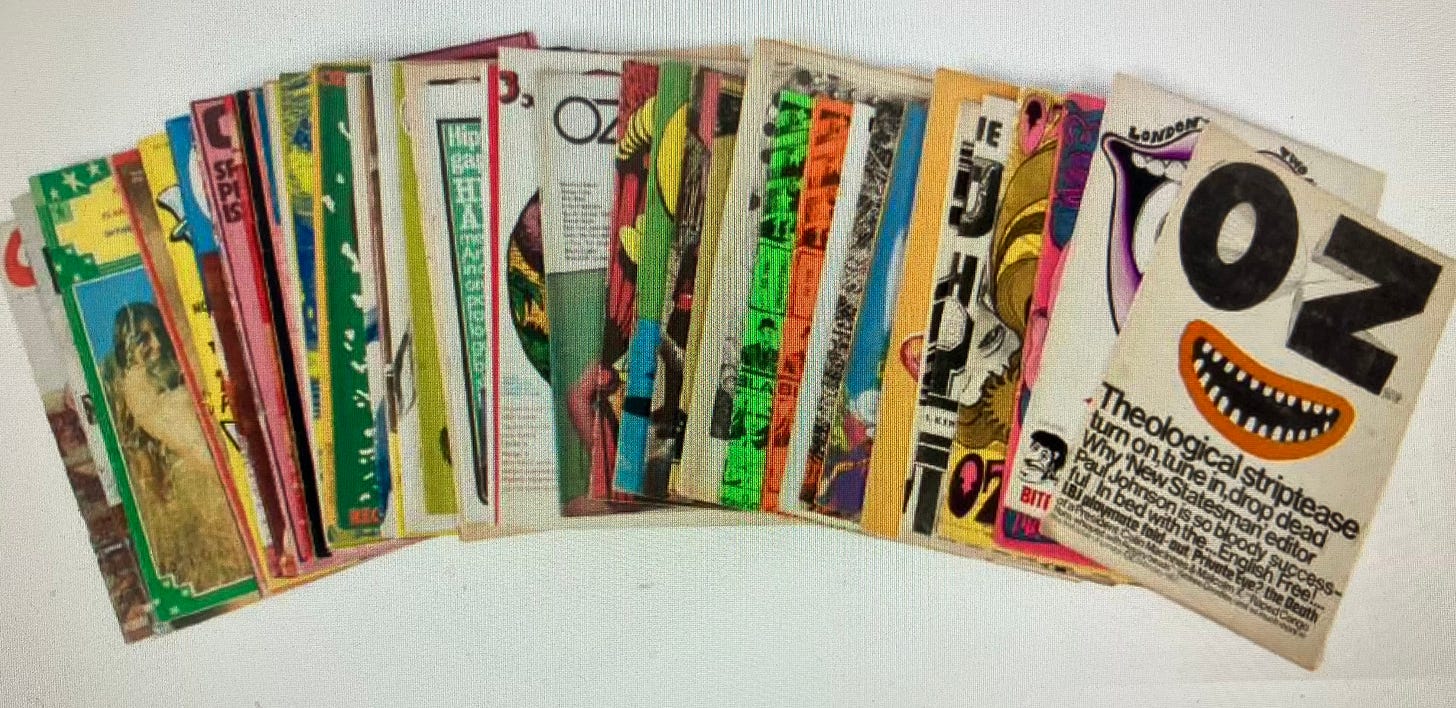Starr aide's counterculture cache
Rare Burroughs items in 'seven figure' hoard
A LONDONER, who was Beatle Ringo Starr’s business manager for decades, formed, over his lifetime, a unique collection of counterculture artefacts running into the many thousands. Gathered under the heading ‘The Long Sixties (1955-1975)’, they are now being offered for sale.
Hilary Gerrard, who provided financial guidance to the ex-drummer of the world’s biggest band from the 1970s until well past the millennium, died aged 89 in 2023. But his remarkable legacy as a collector is now seeeking a new owner with Shapero Rare Books handling the arrangements.
The collection, which has at its core a particularly significant gathering of pieces associated with William S. Burroughs, is valued at ‘a seven figure sum’. It is thought that the materials could end up in private hands or appeal to an institution, perhaps a museum or university.
The ephemera of that key period - posters, festival tickets, leaflets, magazines and more - are particularly rare adding to the appeal. Several thousand individual pieces will be on view in Shapero’s Bond Street Gallery until November 21st, 2025.
Pictured above: Collector Hilary Gerrard, Ringo Starr and Barbara Bach
Gerrard counted Ringo Starr as a close friend. He was often spotted in the
background but never sought the spotlight. However, his prolific collecting habits allowed to buy back his youth back, adding to his personal haul some of the most iconic items of that era, a time when post-war youth was rebelling against its parents’ generation.
‘The hippie generation was born,’ as Shapero’s press release explains. ‘Rejecting mainstream society, this counter culture movement embraced peace & love, drugs & sex, spirituality & environmental awareness. It was the birth of festivals and of political opposition to wars and social discrimination.’
This collection captures all of these movements and around the world: an extensive collection of William S. Burroughs books and periodical contributions; material relating to various Civil Rights Movements and Black Identity; items covering the youth movement internationally; plus multiple underground press and periodicals
Artefacts linked to Burroughs include an extensive selection of books and periodical contributions by the Naked Lunch author, and containing his two rarest items: one of ten copies of Time, published in New York by “C” Press (1965), signed by the author and artist Brion Gysin with an original drawing and page of the original manuscript.
Another highlight is Gysin’s manuscript notebook detailing the crucial period between 1958 and 1961 when he was living in the Beat Hotel in Paris, with Burroughs and other Beat figures, developing his cut-up technique, permutated poems, calligraphy paintings and Dream Machine.
Not only unpublished but entirely unknown to the literary and academic communities, this a truly exceptional appearance on the market and an unparalleled opportunity for further research into Gysin’s art and life.
The collection also includes the rare, first edition of ‘Health Bulletin: APO-33, A Metabolic Regulator’, published in New York by Ed Sanders’ Fuck You Press in 1965.
Civil Rights and Black identity also form a significant part of this collection, including material documenting the origins of the Black Panther Party in Lowndes County, Alabama, as well as 302 issues of the Black Panther Party Community News Service newspaper, the most significant group offered to the market in recent years.
It also contains material relating to those struggles linked to Civil Rights and Black identity, through organisations including Student Nonviolent Coordinating Committee (SNCC), Congress of Racial Equality (CORE), and the Black Panther Party.
The active Youth Movement is also covered by the collection with material relating to Students for a Democratic Society (SDS), and the Weather Underground, and the Yippies. Hand-written eye-witness accounts of the violence suffered by protesters during the 1968 Chicago Democratic Convention, by Allen Ginsberg, William S. Burroughs, Jean Genet and Terry Southern, hurriedly composed after demonstrators, including the writers, were tear-gassed by police in Lincoln Park.
Pictured above: Oz magazine collected
Other linked movements include the Diggers, Communication Company (Com/Co), the Berkeley Free Speech Movement, the People’s Park protests, Berkeley Commune, the Symbionese Liberation Army (SLA), Campaign for Nuclear Disarmament (CND), Antiuniversity and Arts Lab.
Further, the collection also incorporates some of the European movements with a collection of 102 Paris May 1968 Protest Posters and a large collection of Dutch Provo. The collection also contains a rare ‘Can You Pass the Acid Test?’ flyer from 1966.
Among the press and periodicals on offer is a complete set of Semina (1955-1964), Wallace Berman’s seminal assemblage publication comprising poetry, aphorisms, and images, distributed by hand and mail to collaborators, friends, and like-minded acquaintances. Semina Two inscribed to Ferus Gallery co-founders Walter and Shirley Hopps.
Additional underground press examples appear with a collection of periodicals and small press publications from the mimeograph revolution. A rare, complete set of International Times (IT), including its precursor The Global Moon Edition Long Hair Times (1966), and related event ephemera is also part of this collection, as is a complete set of Oz magazine with all of the inserts.
Cedric Price’s original site plan for ‘Phun City’ (1970). Originally intended as a fund-raising effort for International Times, accidentally became the first large-scale free music festival in Britain after time and budget restraints meant the fences were not erected.
A large collection of underground press newspapers consists of issues of the Berkeley Barb, Other Scenes, Rolling Stone, Friends, East Village Other, Liberation News Service, San Francisco Oracle, and The Oracle of Southern California.
To escape from the rock’n’roll lifestyle, Hilary Gerrard loved collecting more widely still – rare books and ephemera, particularly 20th-century literature and book art, photography and posters covering a huge range of subjects. His particular fascination, however, was with the ‘Long Sixties’, in particular William S. Burroughs.



